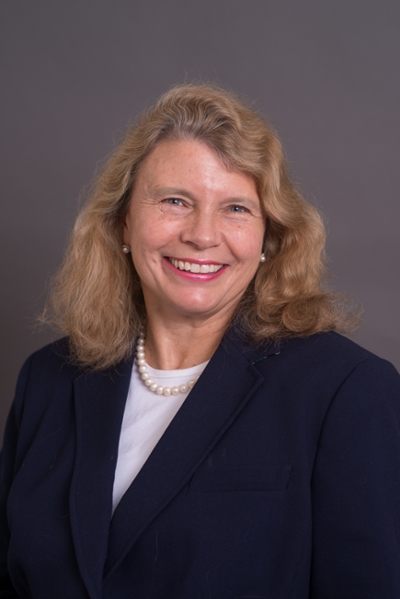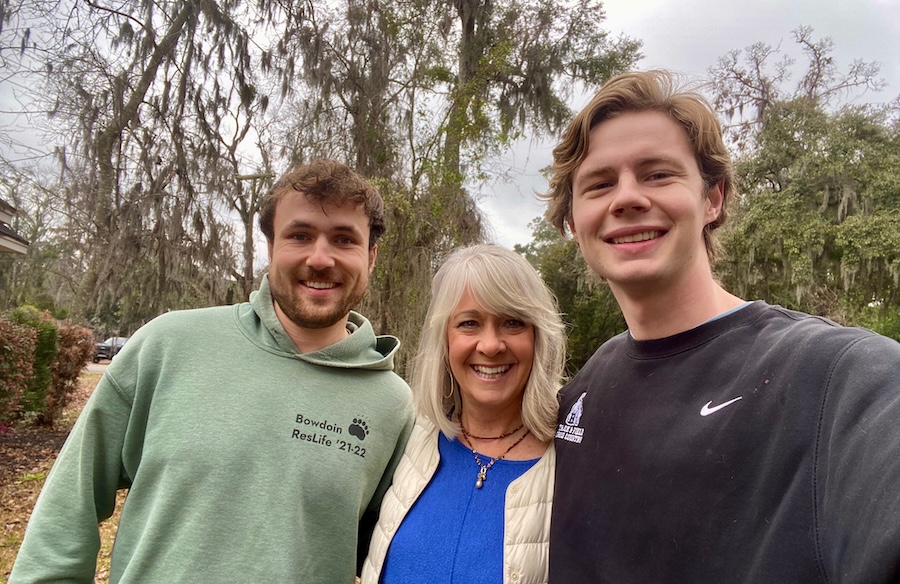“Learning How to Build the Plane and How to Fly it!”
By Tom PorterWhile the ongoing pandemic means enforced idleness for many, for public health professionals like Dora Anne Mills ’82, it means long, stress-filled days, brainstorming, problem-solving, and tracking the progress of the outbreak in Maine. Mills, who directed the Maine Centers for Disease Control for fifteen years, now heads up community health efforts for Maine’s largest health care organization.

Her official title is chief health improvement officer at MaineHealth, which operates eleven hospitals throughout the state. As a member of the senior management team overseeing MaineHealth's response to the coronavirus pandemic, she’s working to ensure patients, health workers, and communities remain as healthy as possible through this pandemic, which she compares to a “months-long nor’easter blizzard.”
Mills describes a typical day.
Early mornings, I'm usually at home in Portland, where I participate in 6:00 a.m or 7:00 a.m. conference calls, often with clinical leaders from across the state and/or other partners. It seems to be the easiest time to connect with those outside of MaineHealth.
My daughter, Julia (Mills Fiori), is a senior in high school and a member of Bowdoin's Class of 2024. Since she is finishing her high school online, I try to stay at home until she's up, to at least say "good morning." I miss driving her to school! But I guess in some ways this is getting me used to her departure for Bowdoin in the fall.
I’m typically in the office from 8:00 a.m. until 6:00 p.m., sometimes later. MaineHealth's corporate headquarters usually houses 350 employees, but that all changed around March 12, when they were abruptly moved to work from home. There are now ten of us on the senior team who work in the building. We all are fortunate to have private offices, and when we meet, either with others or each other, it’s all online.
A central part of our day is the HICS meeting (HICS stands for Hospital Incident Command System and is the emergency governance structure for health systems). These meetings include leaders from across our system, such as the chief executive officer, chief operating officer, chief financial officer, head of supply chain, and others. We review our data, identify challenges (and appoint a subgroup to solve them off line), and obtain updates on progress. It's an efficient way to manage during an emergency. Challenges we have to deal with between HICS meetings include lab testing issues, developing protocols for matters like who needs to be tested for COVID-19 and who needs to wear what kind of mask, isolation procedures, addressing supply chain issues, and determining where we might next see a surge in patients.
Most of the rest of my day includes problem-solving and monitoring the situation. As a medical epidemiologist, I feel like one of my main jobs is to try to predict what our needs will be two or three weeks from now. (I like to use the “Wayne Gretzky philosophy” of keeping one's eye on where the puck is going, not just on where it is!) I also stay connected with colleagues from outside the state. We're all learning how to build the plane and fly it in these unprecedented times, so learning what is working elsewhere and sharing ideas help a great deal. There is simply no time for the peer-review process—we're all peers, and we're simply trying to learn and work together.
On the bright side, I get to work with a number of Bowdoin College colleagues, such as Dr. Erik Steele ’79, who is at Martin's Point, a large physician practice in Maine; Dr. Scott Mills '79 (no relation), who is also at MaineHealth; and Bill Whitmore ’82, vice president of Harvard Pilgrim Health Care for Maine. I also find myself regularly being interviewed by another classmate, Keith Shortall ’82, senior editor at Maine Public Broadcasting.
One of my main jobs is to try to predict what our needs will be two or three weeks from now. I like to use the “Wayne Gretzky philosophy” of keeping one's eye on where the puck is going, not just on where it is!
The other silver lining for me has been working with companies and organizations to plow through this storm together. One of the first calls I received was from Stephen Smith, CEO of LL Bean. He and his team wanted to know how they could help, and they are now making masks for us. Leon Gorman ’56, H’83, longtime CEO of LL Bean, would be very proud. Adjunct faculty member George Isaacson ’70 also got in touch to connect me with Flowfold, a company in Westbrook that makes sports wallets. Within days, Flowfold was able to make face shields for us. Bowdoin faculty and staff have also helped us, using the College's 3D printer to make personal protective equipment. Interesting partnerships have evolved during this pandemic, and they all exemplify one message: Together we are stronger; together we will get through this.
Dora Anne Mills ’82 was a biology major (magna cum laude). She also took classes in Russian! She earned a medical degree from the University of Vermont in 1987. In 1996, she graduated from Harvard University School of Medicine with a degree in public health.



